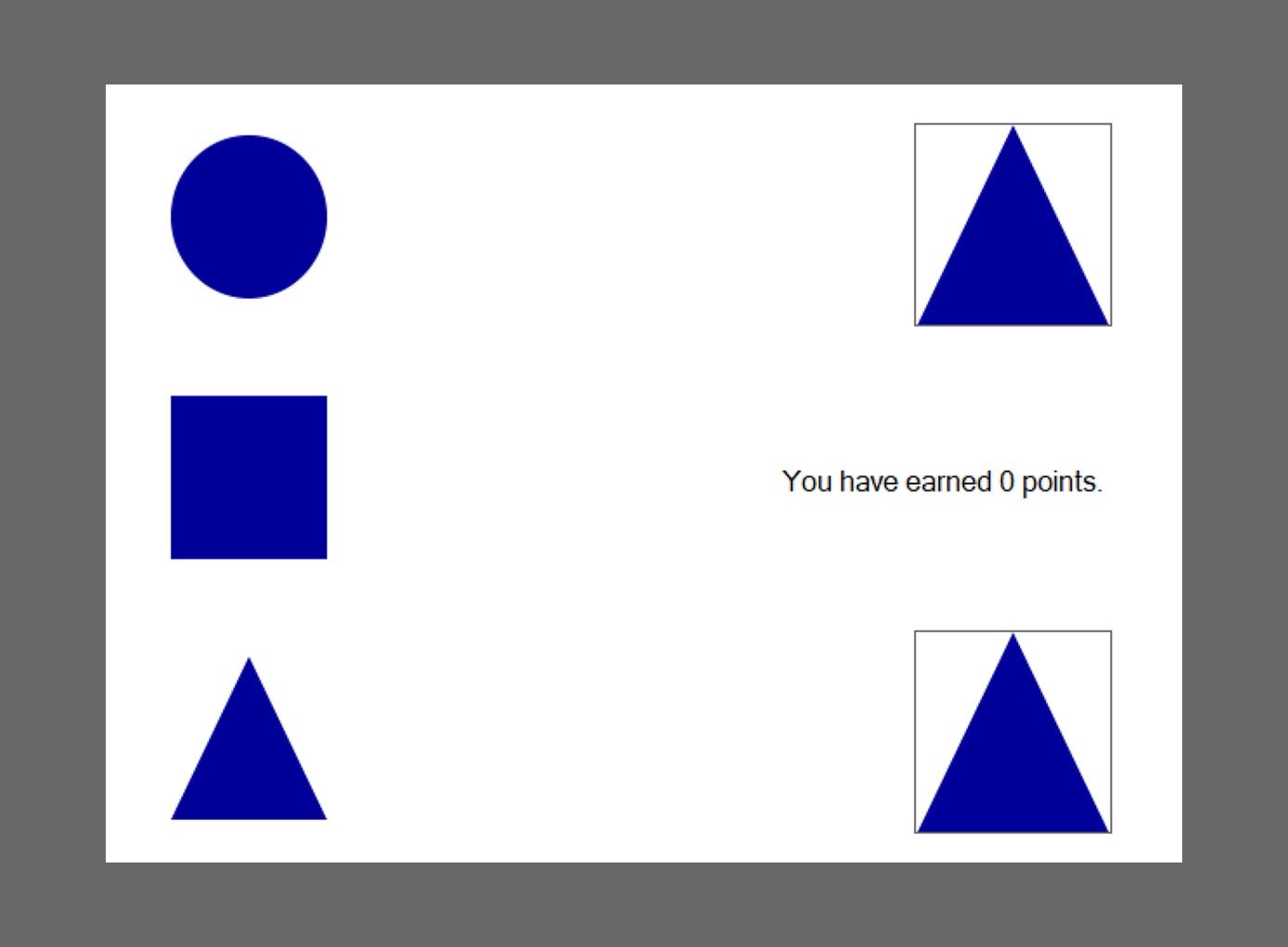Figures
Note. The number of correct responses per 2 min component. In Phase 1, participants were in Context A. The target response was reinforced according to a VI-5 s schedule and the alternative response was on extinction. In Phase 2, participants alternated between Context A and Context B every 2 min. In Phase 2, in Context A, schedules were the same as in Phase 1. In Phase 2, in Context B, the target response was on extinction and the alternative response was reinforced according to a VI-5 s schedule. In Phase 3, participants returned to Context A. The target response was on extinction and the alternative response was reinforced according to a VI-5 s schedule.
Note. Proportion of baseline data was calculated by dividing the number of responses in each 2 min component of Phase 3 by the mean number of responses of the last 3, 2 min components of baseline.
Computer Program
Note. Computer-based task programmed in Visual Basic©. Participants had to click and drag one of the three shapes on the left to one of the two corresponding shapes on the right. The shape on the top right was the target response and the shape on the bottom right was the alternative response.
References
Craig, A. R., Sullivan, W. E., & Roane, H. S. (2019). Further evaluation of a nonsequential approach to studying operant renewal. Journal of the Experimental Analysis of Behavior, 112(2), 210–223. https://doi.org/10.1002/jeab.546
Craig, A. R., Sullivan, W. E., Browning, K. O., DeRosa, N. M., & Roane, H. S. (2020). Re-exposure to reinforcement in context a during treatment in context b reduces abc renewal. Journal of the Experimental Analysis of Behavior, 113(1), 141–152. https://doi.org/10.1002/jeab.569
Kelley, M. E., Liddon, C. J., Ribeiro, A., Greif, A. E., & Podlesnik, C. A. (2015). Basic and translational evaluation of renewal of operant responding. Journal of Applied Behavior Analysis, 48(2), 390–401. https://doi.org/10.1002/jaba.209
Sullivan, W. E., Saini, V., & Roane, H. S. (2018). A nonsequential approach to the study of operant renewal: A reverse translation. Journal of the Experimental Analysis of Behavior, 110(1), 74– 86. https://doi.org/10.1002/jeab.456


